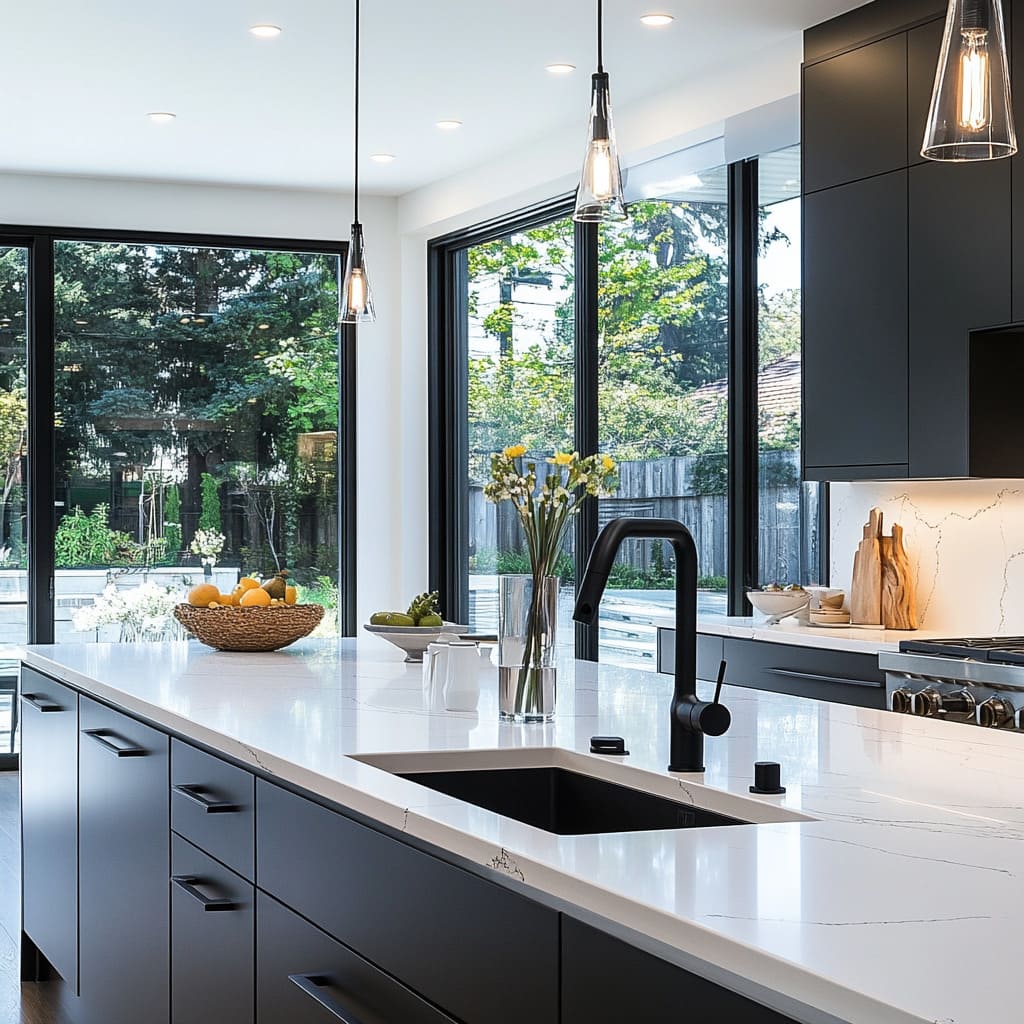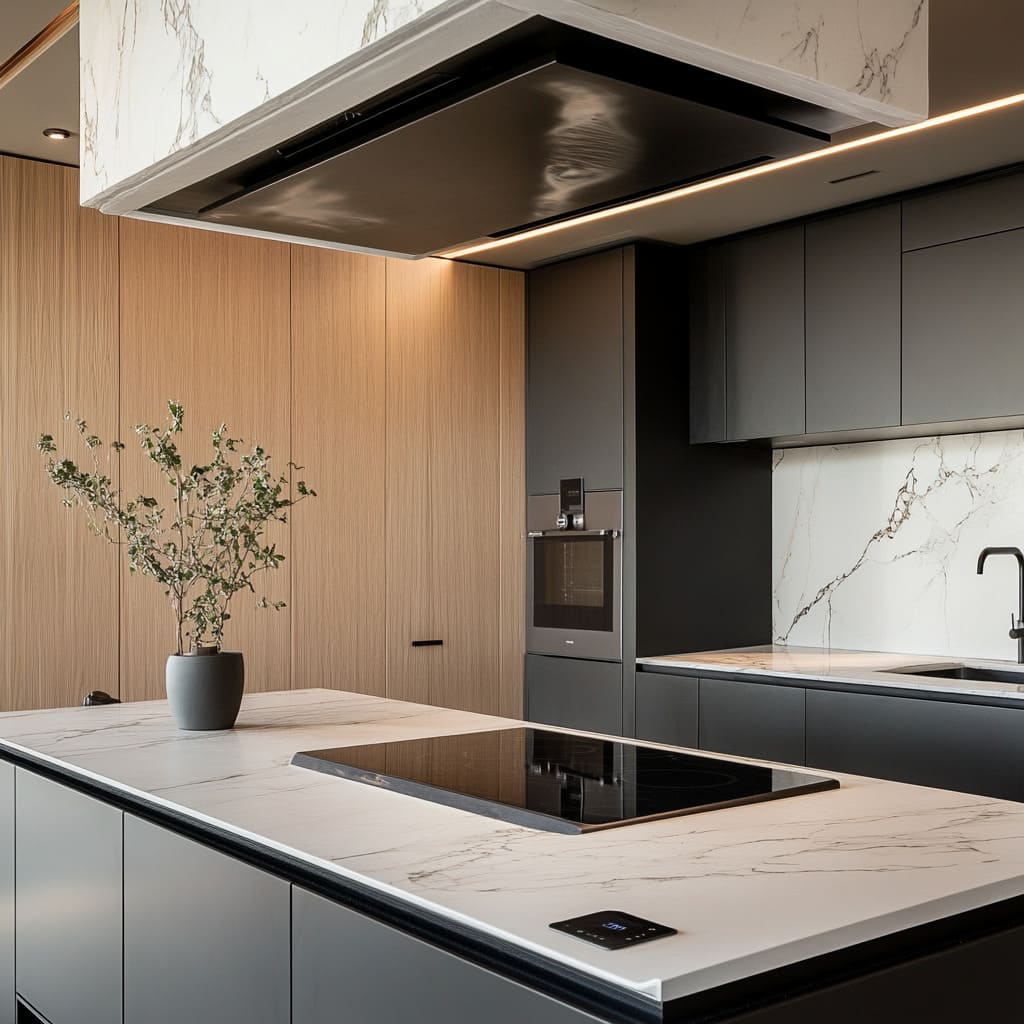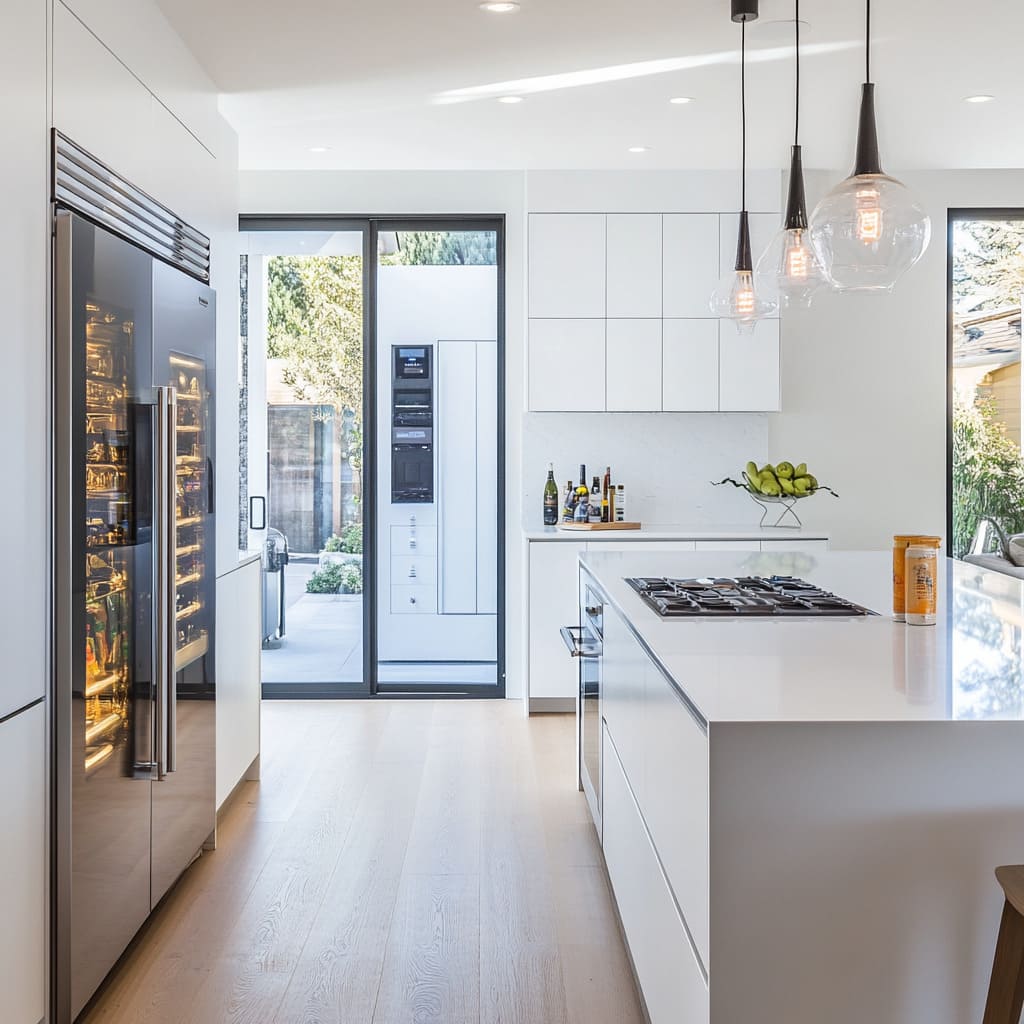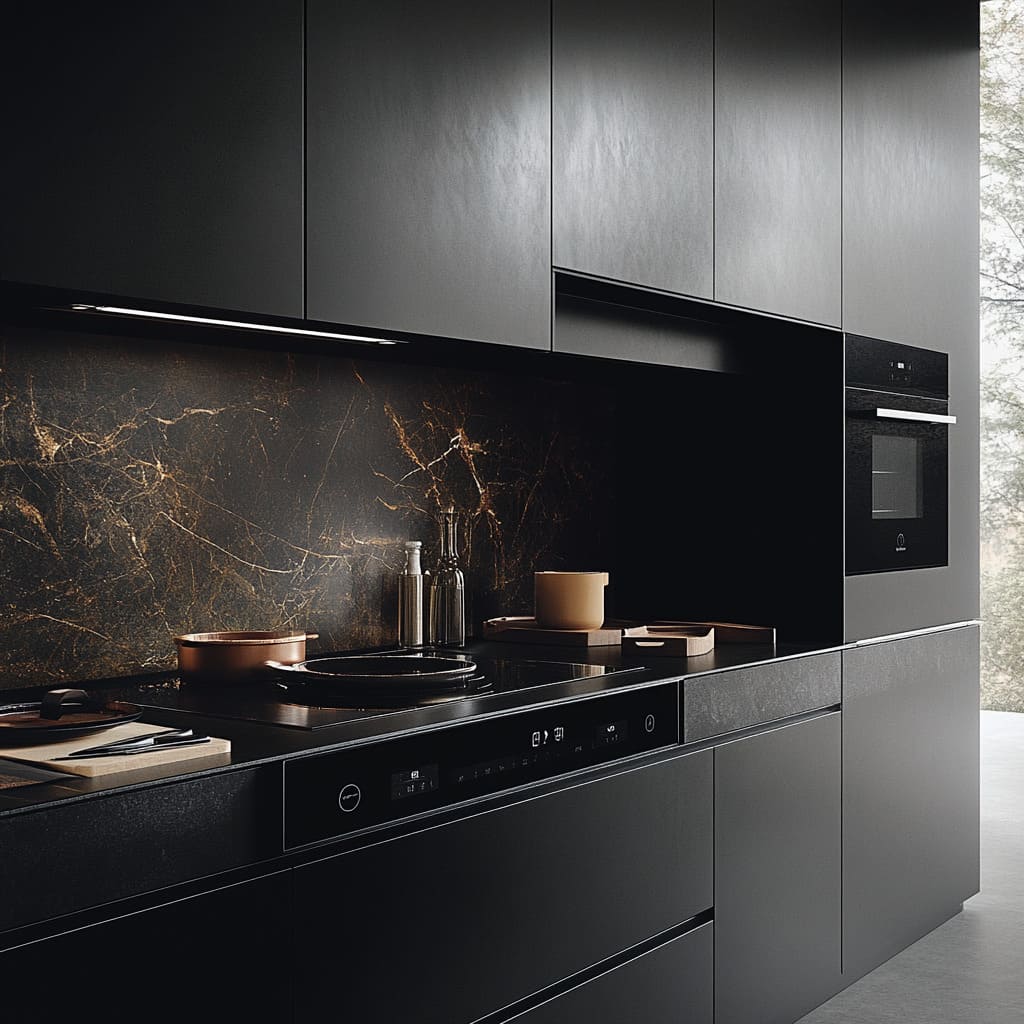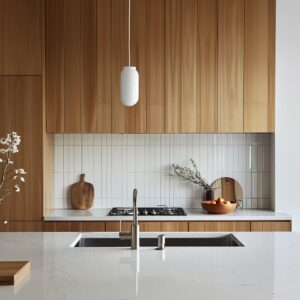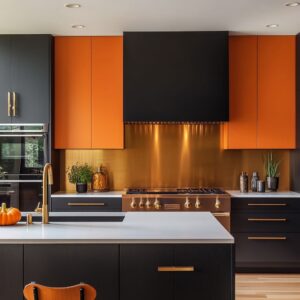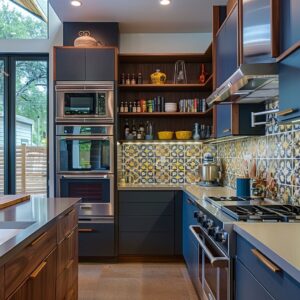Some custom kitchen designs now include integrated digital technology. Recent kitchen designs often include the integration of technology to improve appliance efficiency and space functionality.
Smart kitchens typically combine digital appliances and energy management systems to improve usability and support daily cooking tasks
The Rise of Smart Appliances
Smart appliances have become more common in kitchen design in recent years. These appliances are designed to support task efficiency and overall kitchen functionality.
Examples include refrigerators with inventory tracking features and ovens with remote connectivity. The integration of these technologies in particular and specific kitchen designs allows to align with specific kitchen usage requirements.


Automated Lighting Systems
Lighting systems, including smart lighting, are often used to adjust brightness levels depending on activity in the kitchen. Smart lighting systems can change brightness or color temperature based on selected settings.
Motion sensors can also turn on lights when a person enters a room; it is convenient and effective in the use of energy. In a new construction of a kitchen, one can use lighting to accent features like an island or cabinets and the lighting can be set to cycle through different settings during the day
Enhancing Energy Efficiency
Energy management systems are also very important in the modern smart kitchens. These systems track and regulate the amount of energy used by kitchen appliances and lighting to minimize energy and utility expenses.
Mobile applications can be used to track appliance energy use and review consumption patterns. These features are incorporated in bespoke kitchen designs to enhance sustainability and achieve a seamless integration of a living space.
Voice-Controlled Assistants
Another example of smart kitchen functionality is the use of voice control to manage various processes in the kitchen without having to use your hands. Smart home devices like Amazon Alexa or Google Assistant can assist in setting a time, turning on/off the lights or even playing some music while cooking.
With voice commands, one can adjust the temperature on the thermostat, see the weather outside or even look for a recipe without having to get up. Voice-controlled systems are sometimes used in kitchens to help manage routine tasks without manual input
Streamlined Cooking with Smart Appliances
Smart kitchen appliances offer features that support automated or remote-controlled food preparation. Think about a stovetop that regulates heat or an oven that works in harmony with recipes for baking.
In a bespoke kitchen, this level of customization allows the user to get a cooking experience that they want or one that is suitable for their expertise. Smart technology and personalized design work hand in hand to develop a space that is enjoyable and less tiring when preparing meals
Improved Safety with Technology
Certain technologies have been developed to support kitchen safety, such as detectors and automated shut-off systems. Smart smoke detectors, leak sensors and alerts can alert homeowners of potential risks before they become huge issues.
Some systems are able to shut off ovens or stovetops when it detects a problem, which is helpful for the homeowners. These features can be easily incorporated into custom kitchens to support both functional and protective features.
Smart appliances, lighting systems, and automated tools offer multiple configuration options in contemporary kitchen planning and may help reduce the time spent on routine tasks

